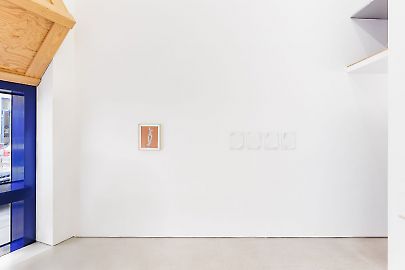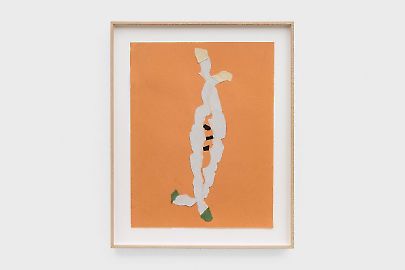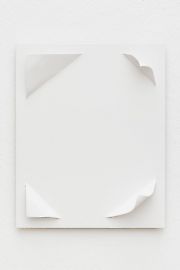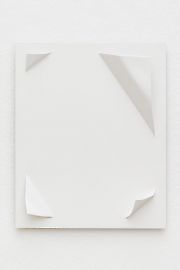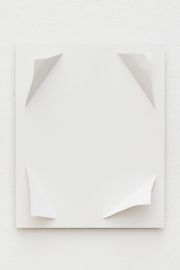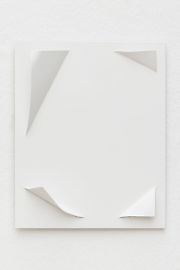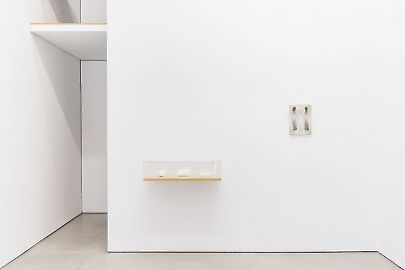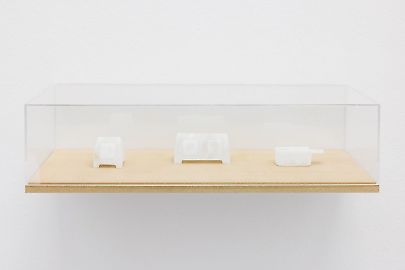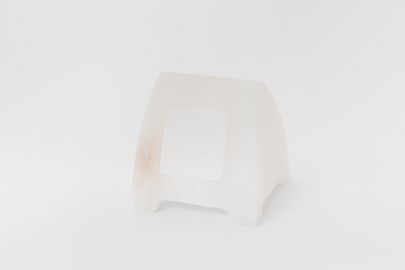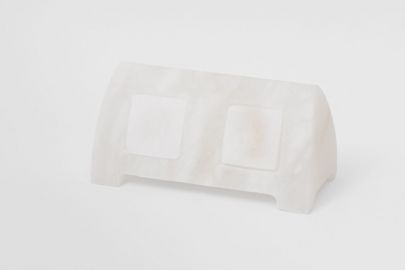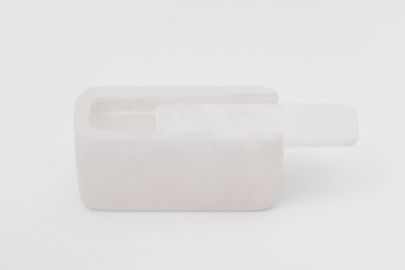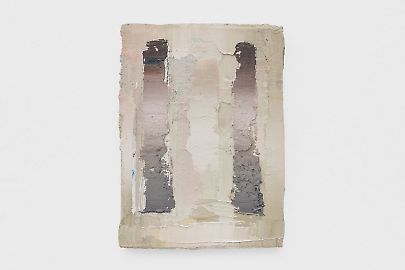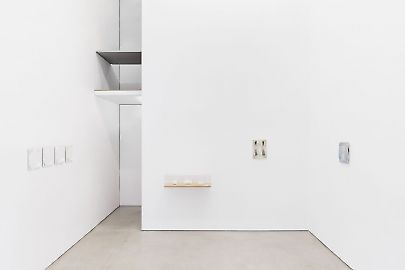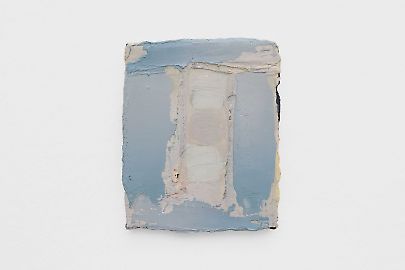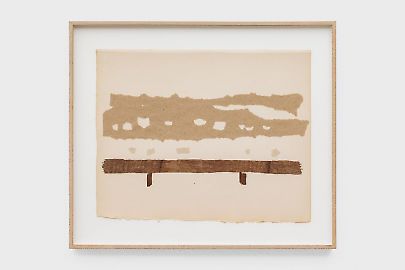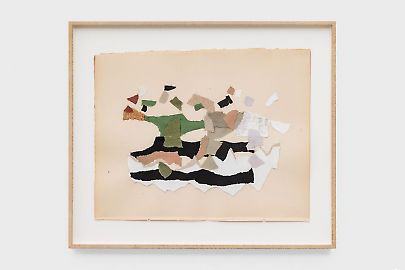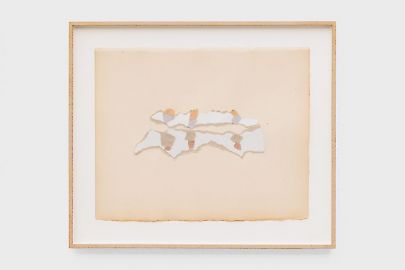Mercedes MANGRANÉ -- Gravities
Georg Kargl Fine Arts is pleased to present the second exhibition of new works by Barcelona based artist Mercedes Mangrané, across painting, collage on paper, video and sculptural works in iron and alabaster.
Mangrané examines, through a varied use of materials, the embeddedness of art history and cultural production within the practice of everyday life, informed by an attentive research process incorporating the study of artefacts and protocols within museum collections. The scales of the works, like small fragments or windows, emerge from a desire that seeks the proximity of the viewer and a lingering engagement with the senses, in a suspended moment of experience. By traversing both a lightness and density of material, Mangrané engages a dialectic between instances of everyday occurrence and systems of cultural power, that reflects on the movements amidst finitude and transformation, form and formlessness.
In the Fall of 1976, the journal Cahiers du Cinéma invited philosopher Gilles Deleuze to consider the film Six Fois Deux by Jean-Luc Godard. Touching upon the appropriative and referential methods of Godard, Deleuze emphasized how he destabilizes representation by raising questions through the conjunctive and, about for what and for whom we speak - ‘to speak an order as a matter of course means speaking while recognizing someone else’s words in your own’.1 To escape such a condition Godard puts down a ‘line of flight inside language’, in doing so troubling the construction knowledge.2 He opens up a space within, a difference, a place for and to act. Deleuze would further elaborate on the potentials of and in later works and along with others under the guise of the post-structuralist project, laid the foundation for deconstructive archival practices with their creative revisions and fabulations.
Mangrané’s work sheds light on gaps, holes, and’s. The video work Lipsanothecas (essay I), unwinds an investigation into the preservation of artefacts, the construction of desire within collections and the inherent logic of death performed through the act of preservation, questioning the supposed neutrality of the museum. The study circles Lipsanothecas - literally place where that which remains are kept - small boxes that held relics after the church in the 7th century allowed for the body of saints to be pieced apart and transported more widely. Mangrané traces the genealogy of these boxes as it transforms into sign and artefact, within Christian symbolism and then again into the museum, questioning the agency of these objects as containers of history. However, as the video tours across the surfaces of these ancient artefacts, textured, scratched, worn and marked by the passage of time and action, the use of such an object as signifier starts to appear somewhat fallible.
The Dorso series is a set of variations on painted iron sheets, based on the folds of the paper, a loose approximation to the backs of museum cards. Constituting ‘rhythms’ with delicate raised volumes, dispersing light and shadow on the monotony of the white surface. From the tension and flaccidity of each fold, each sculpture evokes a different character, simulating a fragility and organicity that is in fact hard and cutting. In the collage works, the synthesis alternates with the tremor of the hand torn paper, where minimal elements such as dots and lines rise, collide or rest in compositions, both weightless and dynamic, through which refrains of certain memories, images or ideas arise. The paintings Lipsanoteca I and Ascensor II, mined from habitual encounters and translated into subconscious landscapes - dusk, the remains in a box, a bus ride - explore the sensory conditions of such experience through the vibrations that occurs within matter and shifts in tonal gradient. Laden with notably heavy viscous swipes of oil paint applied with a spatula they offer a tactile intensity to the monochrome works and the subtly volatile surfaces of the collages.
On the rear wall of the gallery perch three empty, ghostly vessels. ‘Lipsanothecas’ modelled on their eponymous referent in alabaster, these boxes transform and re-emerge once more in the gallery display. Stripped of any of their markings or symbolism, void of color, they stir an anxiety and satisfaction, elicited through the absence of any concrete or graspable reference. Here appears a will to connect the sensations and motifs of various temporalities, in a constant regeneration of meanings. Through elemental and material transitions, light into darkness, shadow into matter, Mangrané poses a line of flight through object, archive and history, that traces the experience of subjectivity, with its compromising baggage of emotion, whim and nostalgia, within the structures of cultural production and the sweeping narrative arcs of time.
1. Gilles Deleuze, Three Questions About Six Fois Deux, Cahiers du Cinema no.7, 1976
2. Molly Nesbit, History Without Object, 2009


